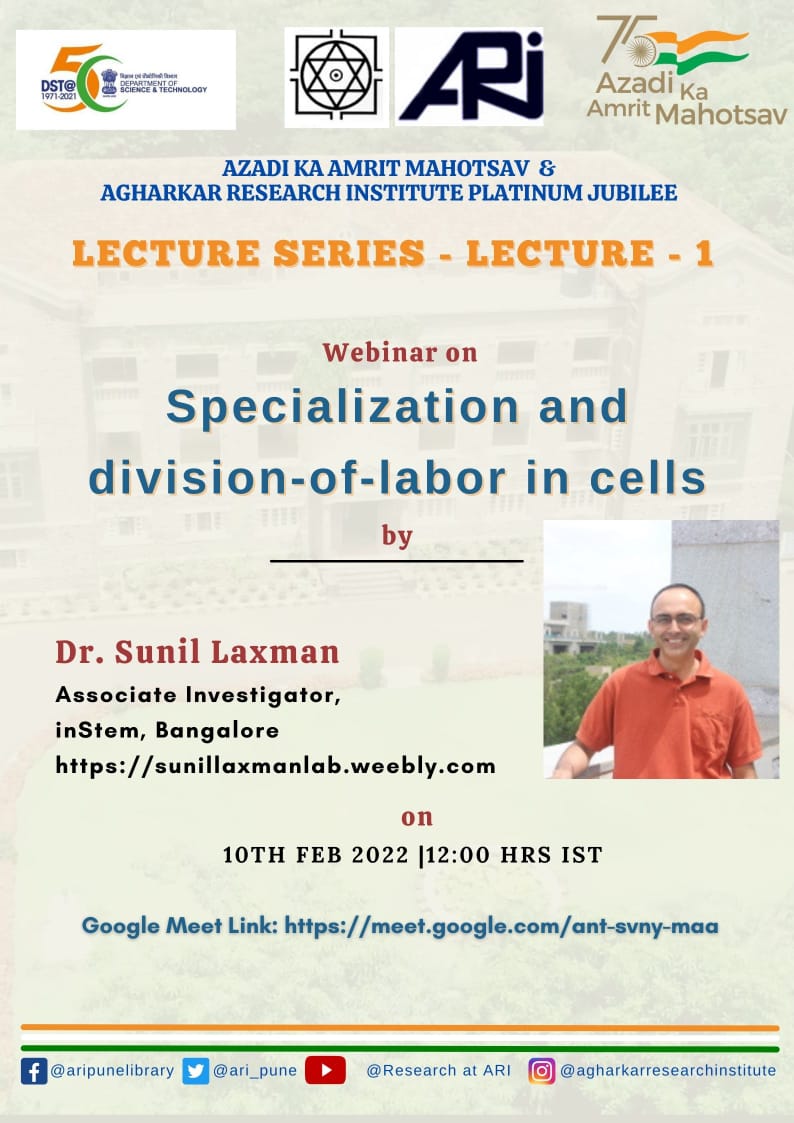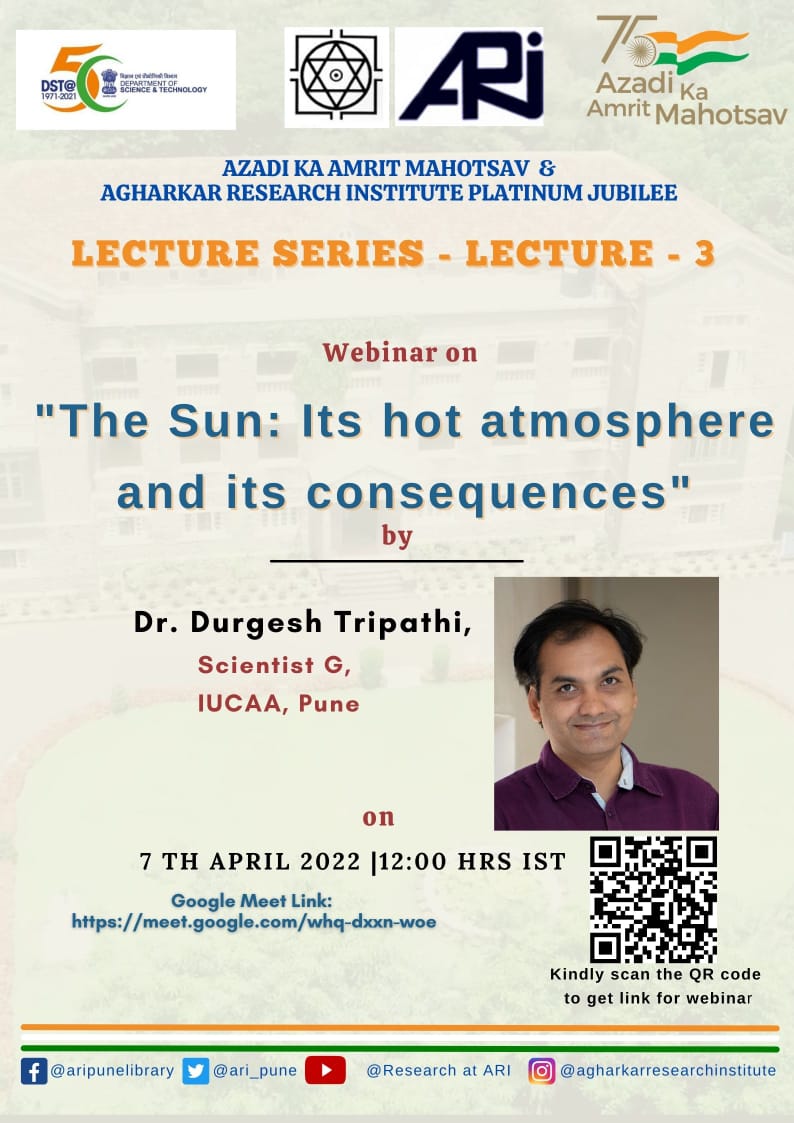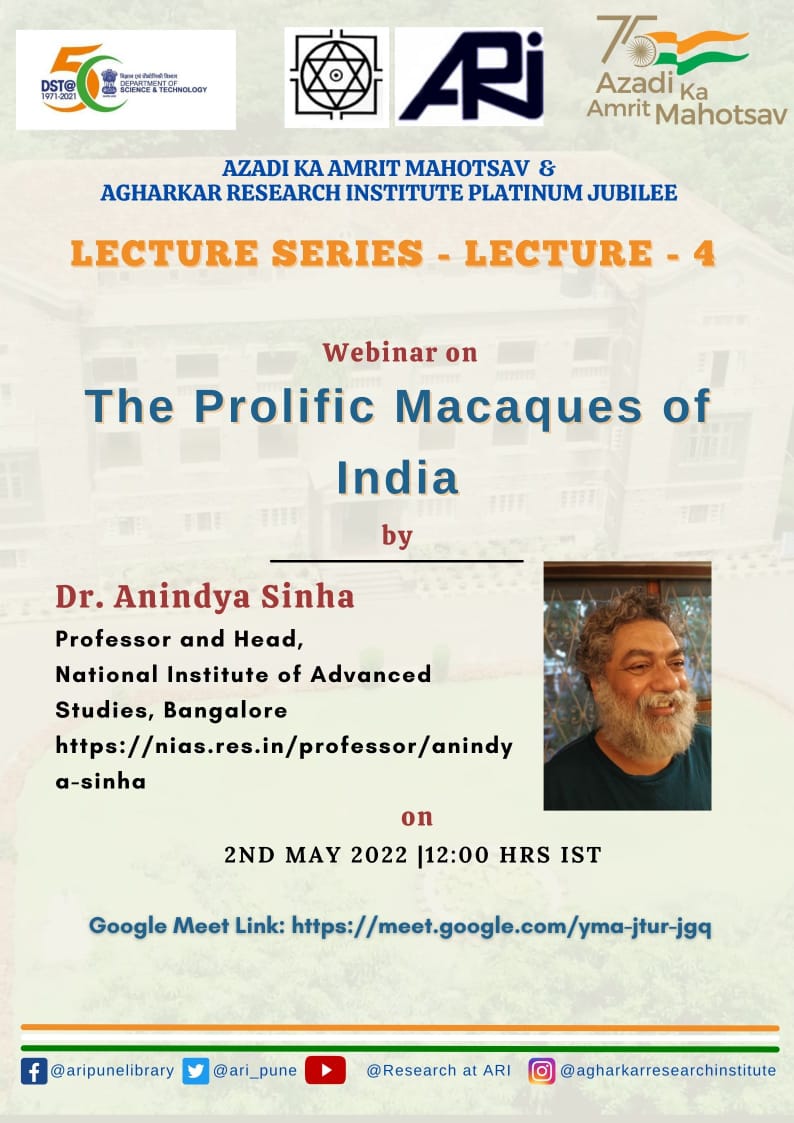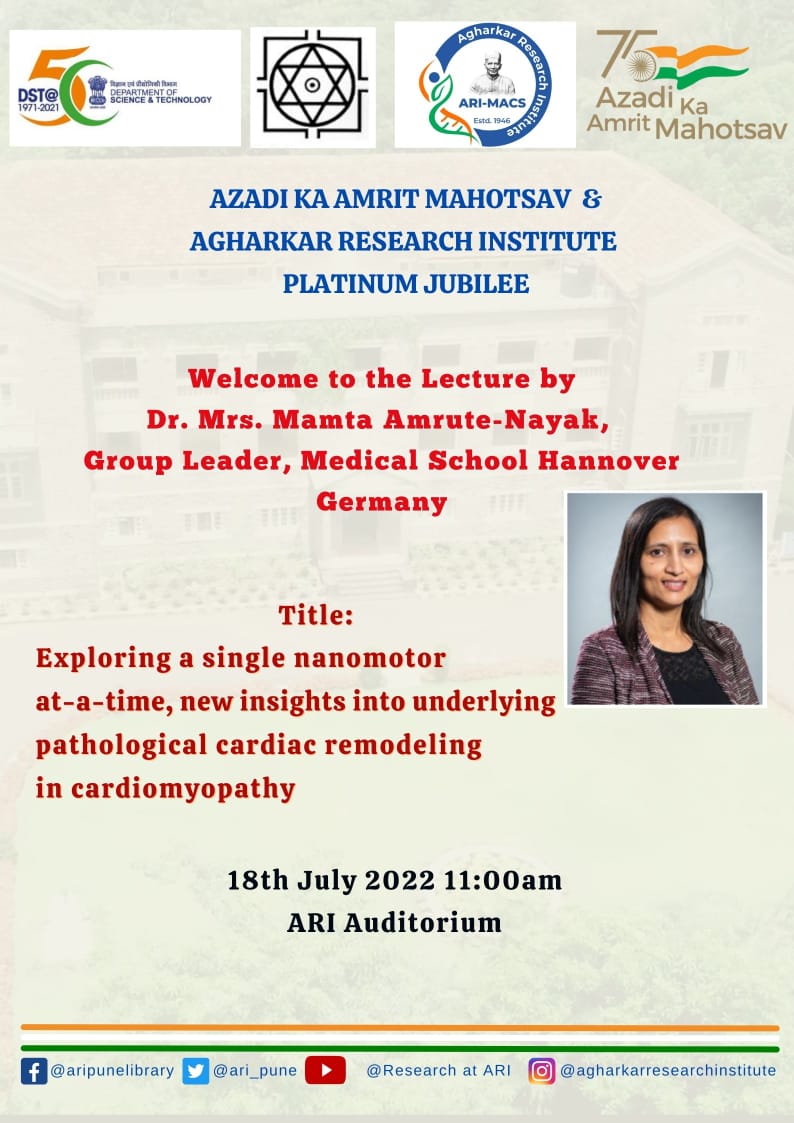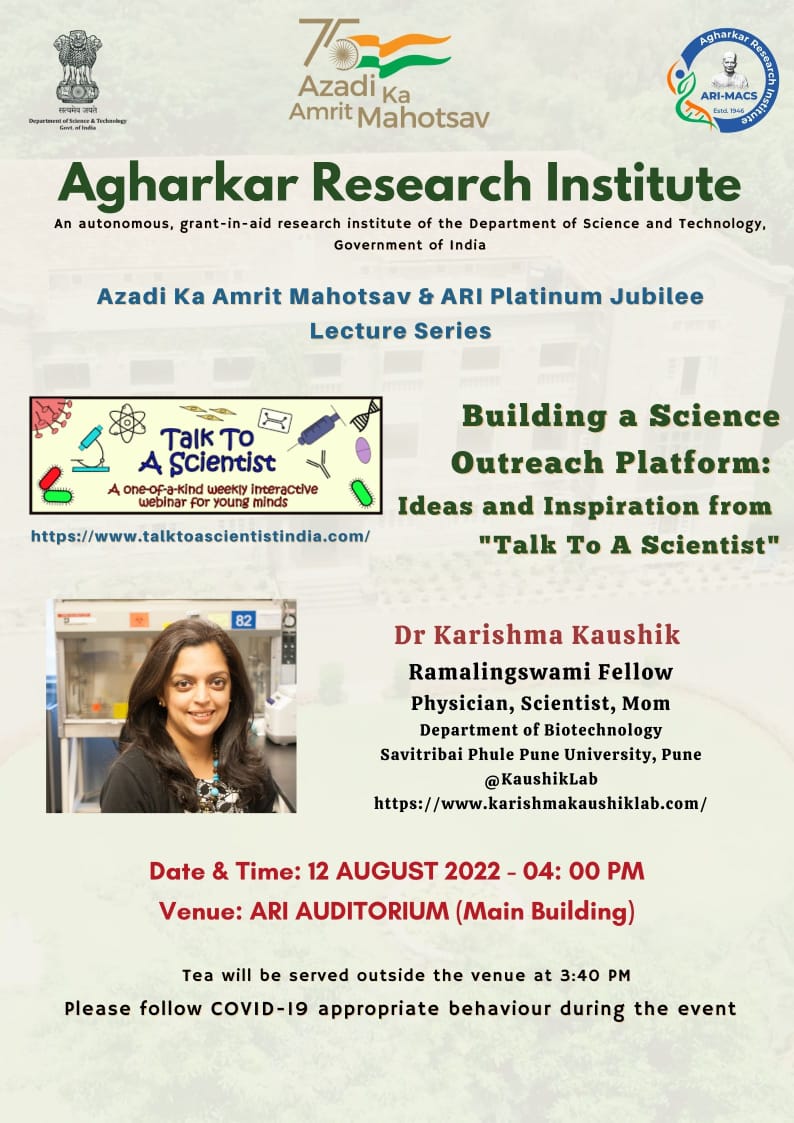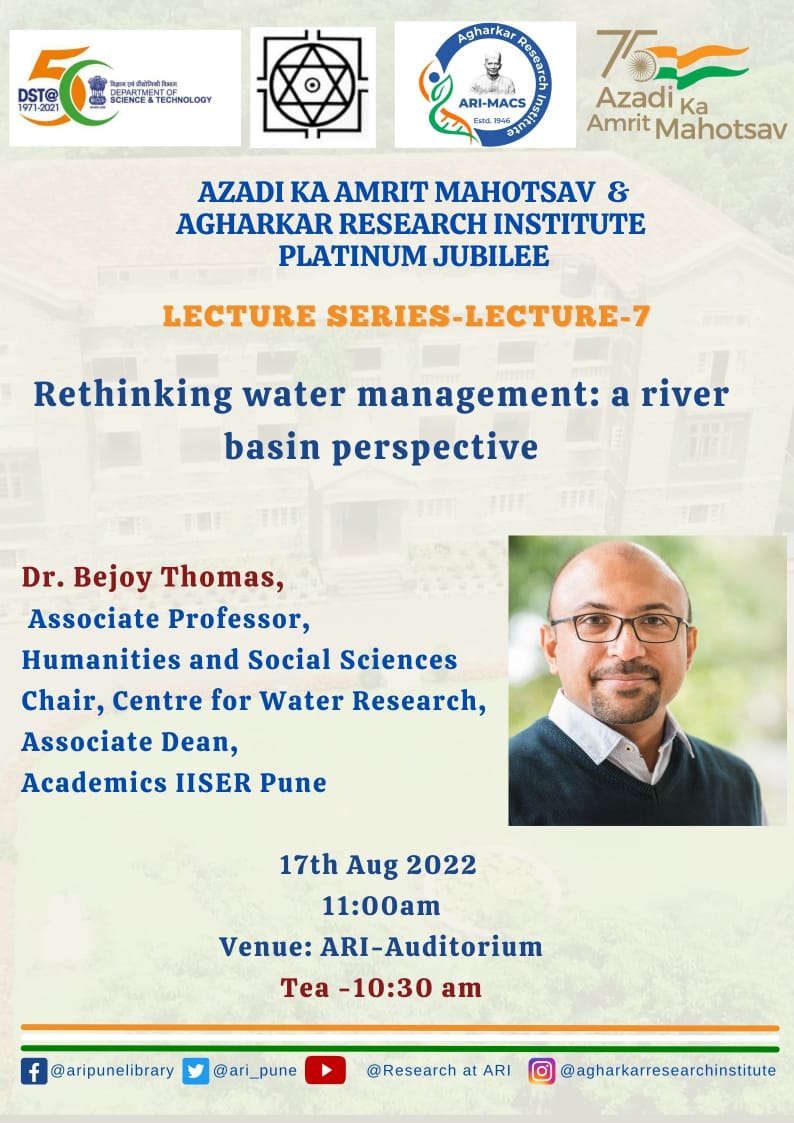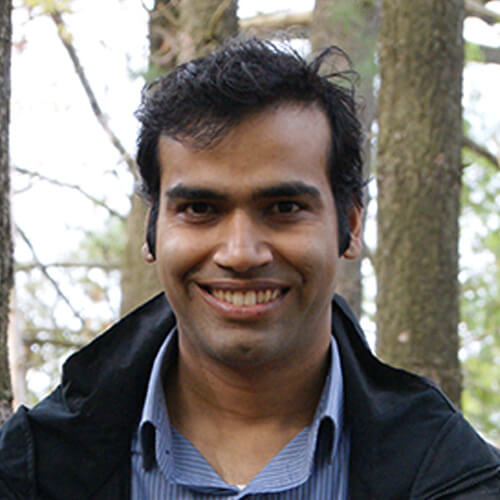
Google Scholar / Social Media
Name : Dr. Bhupendra V. Shravage
Designation : Scientist – E
Brief Background :
Dr. Bhupendra V. Shravage completed his doctoral studies under the guidance of Prof. Dr. Siegfried Roth at the Institute for Developmental Biology, University of Cologne, Germany. He investigated the role of “TGF-beta and EGF signaling pathways involved in patterning of dorsal chorion structures in Drosophila”.
He moved to University of Pittsburgh, USA, to work with Dr. Beth Roman as a post-doctoral fellow on understanding the role of Alk1 signaling in blood vessel development during zebrafish embryogenesis. He did his second post-doctoral with Prof. Eric Baehrecke at UMass Medical School,USA, on “Autophagy in cancer and cell death”.
During his tenure at UMass, they discovered the multi-functional role of Atg6 (Beclin1 in mammals) in various membrane-trafficking pathways and haematopoiesis in Drosophila. Since 2014 Dr. B. V. Shravage is working as a Scientist at the Agharkar Research Institute, Pune, India and is affiliated to Savitribai Phule Pune University, Pune, India.
His research work is currently focused on understanding molecular regulation and function of autophagy in the germline. He is recipient of the prestigious Ramalingaswami Fellowship (Dept of Biotechnology, Govt. of India) and Early Career Research Award (Dept of Science and Technology)
Contact Details :
bhupendra.shravage@gmail.com, bvshravage@aripune.org
020-25325048, 020-25325045, 020-25325076
- BSc Microbiology Abasaheb Garware College, University of Pune, 1998.
- MSc Marine Biotechnology, Goa University, 2000
- Dr. rer. Nat (German PhD), University of Cologne, Germany 2006.
Macro-autophagy(termed as autophagy henceforth) is a conserved process that facilitates degradation of cytoplasmic components including toxic proteins/aggregates and damaged organelles via the lysosome. Autophagy functions have been identified from gametogenesis to maintenance of cellular homeostasis during aging.
We are interested in understanding the role of autophagy in animal development and in diseases such as cancer and neurodegeneration. We use Drosophila melanogaster, as a model system to study autophagy in various cell typesand in distinct cellular contexts. Currently, we are focused on unravelling novel functions of autophagy and its regulation in stem cellsincluding germline stem cells.
- Klionsky D.,Shravage B.V., et al.,(2020)Guidelines for the Use and Interpretation of Assays for Monitoring Autophagy (4th edition)Autophagy In press
- Nilangekar, K. S., Murmu N., Sahu G. and Shravage B.V. (2019) Generation and Characterization of Germline-Specific Autophagy and Mitochondrial Reactive Oxygen Species Reporters in Drosophila. Front Cell Dev Biol. 2019 Apr 3;7:47
- Nilangekar K.S., Shravage B.V. (2018) Mitochondrial Redox Sensor for Drosophila Female Germline Stem Cells. In: Turksen K. (eds) Autophagy in Differentiation and Tissue Maintenance. Methods in Molecular Biology, vol 1854. Humana Press, New York, NY.Reserch highlighted on the cover of the book series.
- Bali, A. and Shravage, B. V. (2017). Characterization of the autophagy related gene-8a (Atg8a) promoter in drosophila melanogaster. J. Dev. Biol.61, 551–555.
- Dixit, N. S., Shravage, B. V. and Ghaskadbi, S. (2017). Identification and characterization of the autophagy-related genes Atg12 and Atg5 in hydra. J. Dev. Biol.61, 389–395.Research highlighted on the cover of the journal.
- Chang, T.-K., Shravage, B. V., Hayes, S. D., Powers, C. M., Simin, R. T., Wade Harper, J. and Baehrecke, E. H. (2013). Uba1 functions in Atg7- and Atg3-independent autophagy. Cell Biol.15, 1067–78.
- Shravage, B. V., Hill, J. H., Powers, C. M., Wu, L. and Baehrecke, E. H. (2013). Atg6 is required for multiple vesicle trafficking pathways and hematopoiesis in Drosophila. Development140, 1321–9.












